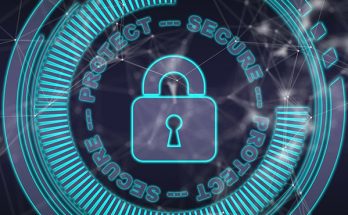Table of Contents
From the issues related to PC configurationsto the latest Malware and Ransomware threats; from the Backup procedures to the Data Breach; from DDoS attacks to the latest Bluetooth and Wi-Fi vulnerabilities. These are the topics covered by the 50 PDF released by the United States Computer Emergency Readiness Team (US-CERT) as of today.
US-CERT is an organization within the Department of Homeland Security’s (DHS) National Protection and Programs Directorate (NPPD); more specifically, it's a branch of the Office of Cybersecurity and Communications' (CS&C) National Cybersecurity and Communications Integration Center (NCCIC): the organization is responsible for analyzing and reducing cyber threats, vulnerabilities, disseminating cyber threat warning information, and coordinating incident response activities.
Over the past few years US-CERT has published a wide amount documents, tutorials, guides and in-depth analysis regarding the most important Information Security topics and aspects: these publications are an invaluable resource for anyone interested in learning how Cybersecurity actually work and how to keep their family, customers, colleagues and partners up-to-date with the many IT-related risks and threats. In this article we have put together all of the PDFs released by US-CERT as of today: we'll try our best to update the list below whenever new content shall be published in the future.
Before taking a look at the documents it could be wise to recall a famous quote by John T. Chambers, former executive chairman and CEO of Cisco Systems Inc.:
"There are two types of companies: those that have been hacked, and those who don't know they have been hacked."
Enjoy reading!
General Internet Security
- Understanding Voice over Internet Protocol (VoIP)
- Banking Securely Online
- Playing it Safe: Avoiding Online Gaming Risks
- Protecting Aggregated Data
- Introduction to Information Security
- South Korean Malware Attack
- The Risks of Using Portable Devices
- Cyber Threats to Mobile Phones
- Understanding and Protecting Yourself Against Money Mule Schemes
- Socializing Securely: Using Social Networking Services
Securing Your Computer
- The Basics of Cloud Computing
- Data Backup Options
- Small Office/Home Office Router Security
- Disposing of Devices Safely
- Governing for Enterprise Security
- Home Network Security
- Recognizing and Avoiding Email Scams
- Common Risks of Using Business Apps in the Cloud
- Securing Your Web Browser
- Software License Agreements: Ignore at Your Own Risk
- Spyware
- Using Wireless Technology Securely
- Virus Basics
Recovering from an Attack
Distributable Materials
Technical Publications
- DHS Cyber Security Initiatives
- A Guide to Securing Networks for Wi-Fi
- Technical Information Paper: Coreflood Trojan Botnet
- Fundamental Filtering of IPv6 Network Traffic
- Website Security
- System Integrity Best Practices
- Cyber Threats to Mobile Devices
- Practical Identification of SQL Injection Vulnerabilities
- DDoS Quick Guide
- SQL Injection
- "Heartbleed" OpenSSL Vulnerability
- Combating the Insider Threat
- Computer Forensics
- Keylogger Malware in Hotel Business Centers
- The Continuing Denial of Service Threat Posed by DNS Recursion (v2.0)
- Backoff Point-of-Sale Malware
- Malware Threats and Mitigation Strategies
- Malware Tunneling in IPv6
- Ransomware
- National Strategy to Secure Cyberspace
- GRIZZLY STEPPE – Russian Malicious Cyber Activity
- Technical Trends in Phishing Attacks



